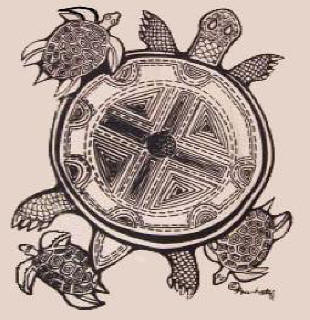 |
LITR 4231 Early American
Literature Research Posts 2014 (research post assignment) Research Post 1 |
 |
Amanda Duarte
Explaining Baroque Literature
Introduction to Research:
I chose to research baroque literature because as I was writing my midterm exam,
I noticed that Dr. White’s site did not cover a lot about the literary style.
His site provided information that primarily focused on music and visual art
rather than literature. One of the poets we studied, Sor Juana de Cruz, composes
poetry whose style is mainly classified as Spanish Baroque literature. The main
focus for this research is to find more information on the topic of baroque
literature such as its origins, uses, and defining characteristics.
Definition of Baroque Literature:
The most straightforward and accurate definition of Baroque literature that I
found was on about.com in their literature section. They define baroque
literature as “A
style of writing that is extravagant, heavily ornamented, and/or bizarre.
A term more commonly used to characterize the visual arts
and music, baroque
(sometimes capitalized) can also refer to a highly ornate style of prose or
poetry. Baroque
literary style is generally marked by rhetorical sophistication, excess, and
play. Self-consciously remaking and thus critiquing the rhetoric and poetics of
the Petrarchan, pastoral, Senecan, and epic traditions, baroque writers
challenge conventional notions of decorum by using and abusing such Tropes an
figures as metaphor, hyperbole, paradox, anaphora, hyperbaton, hypotaxis, and
parataxis, paronomasia, and oxymoron.” This definition is put into simple terms
that are easy to get an idea of the characteristics of what Baroque style
literature looks like. Even though the site isn’t exactly academically reliable,
they give contact information for the college professor who wrote the
definition.
Origin of Baroque Literature:
After searching for several hours, this was the definition that was the easiest
to understand.
Finding an academically reliable source for information about the origins of
Baroque style was somewhat a difficult and grueling task. Harold Jantz’s
Article, “German Baroque Literature,” gives information about Baroque literature
in Germany from its origins to its end. Jantz says that the Baroque era lasted
for “some 130 odd years,” from about the 1610s to about the 1740s. I found that
because there was so much diversity in literary style during this time, it is
hard to define it as one simple style. There is so much into the style that
makes it confusing to try and classify a particular piece of literature into the
Baroque. Jantz also says, “the art historians have used the word baroque more
justly and clearly than have the literary historians.” Through his article and a
few other sources, I found that Baroque literature originated in Italy and
Germany in the 17th
and 18th
centuries. The Baroque style was a reaction to the civil, political, and
religious conflict during that time. (Britannica.com).
To back this up, Jantz also includes in his article
that external factors such as the Thirty Years War “serve to illustrate how
extraneous socio-political concerns can obscure for us the intrinsic course of
development of baroque literature itself.”
Jantz also lists many other factors that determined
the literary development during this time. Some of the other factors include but
are not limited to the Counter Reformation, stiffened Protestant orthodoxy and
the reaction to Pietism, Absolutism, aristocratic courtly dominance, the
supposed late and weak burgher participation, political weakness and disunity,
and the Fall of Rome.
Who Uses Baroque Style Literature:
Baroque literature was used in Italy, Germany, France,
Spain, and by the English.
Some of the Baroque writers include:
France:
The three great seventeenth century French dramatists: Pierre
Corneille(1606-1684) a French playwright of tragedies, known as the founder of
French tragedies, Jean-Baptiste Racine (1639-1699) a French playwright of
tragedies, a poet, and historiographer, and Jean Baptiste Poquelin AKA Moliere
(1622-1673)
considered one of the greatest comedic masters of Western literature
(thefreelancehistorywriter.com).
Germany:
Hans Jacob Christoph von Grimmelshausen (1621-1676) German
novelist whose series
Simplicissimus matches
the grotesque Thirty Years War. (Britannica.com)
England:
John Milton (1608-1674) a writer of prose and poetry, one
of his works connected to Baroque literature include his poem
Paradise Lost
(poetryfoundation.org).
Anne Bradstreet (1612-1672) Much of her work can be considered baroque style.
Conclusion:
The baroque literary style can be quite confusing to any
one and every one who attempts to try and understand it; even those who are
educated to do so. My research has led me to find a lot more information than
what I anticipated finding, though researching such a broad literary style was
quite interesting. I think that in future research one may have to narrow the
research to a specific country and what was happening during the 17th
and 18th
centuries. I now understand that the Baroque style encompasses many diverse
themes and forms and is much more complicated than what it seems to be. I also
understand why Dr. White has not included much on the topic for his site.
Works Cited
http://grammar.about.com/od/ab/g/Baroque.htm
http://www.britannica.com/EBchecked/topic/53809/Baroque-period
http://college.cengage.com/humanities/perry/humanities/1e/students/summaries/ch16.html
http://thefreelancehistorywriter.com/2013/06/11/pierre-corneille-french-playwright/
http://www.poetryfoundation.org/bio/john-milton
|
|
|
|


